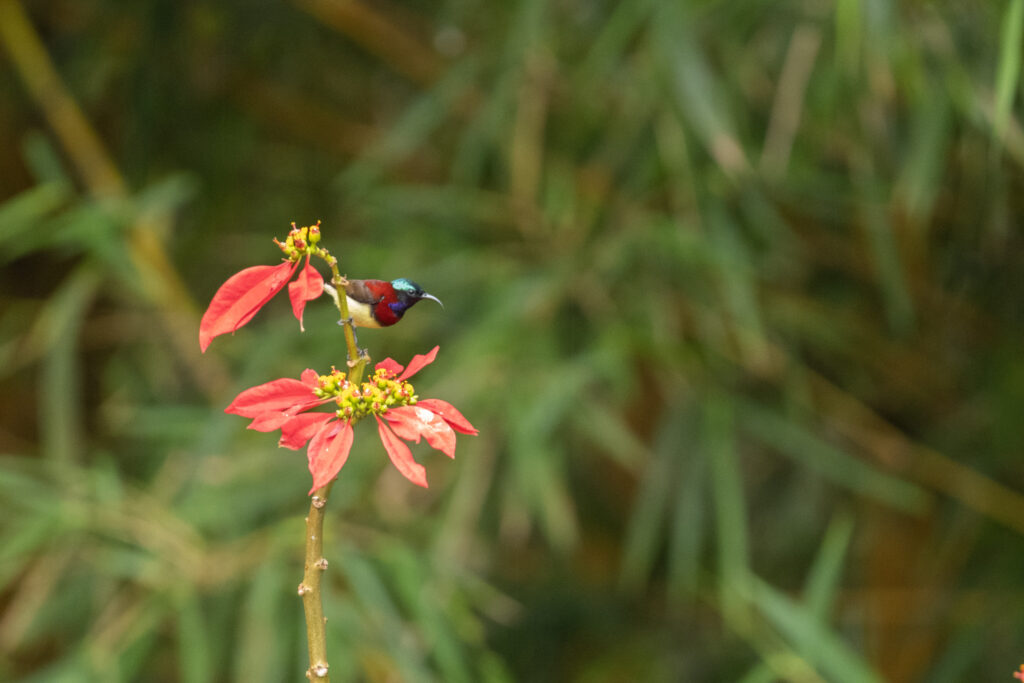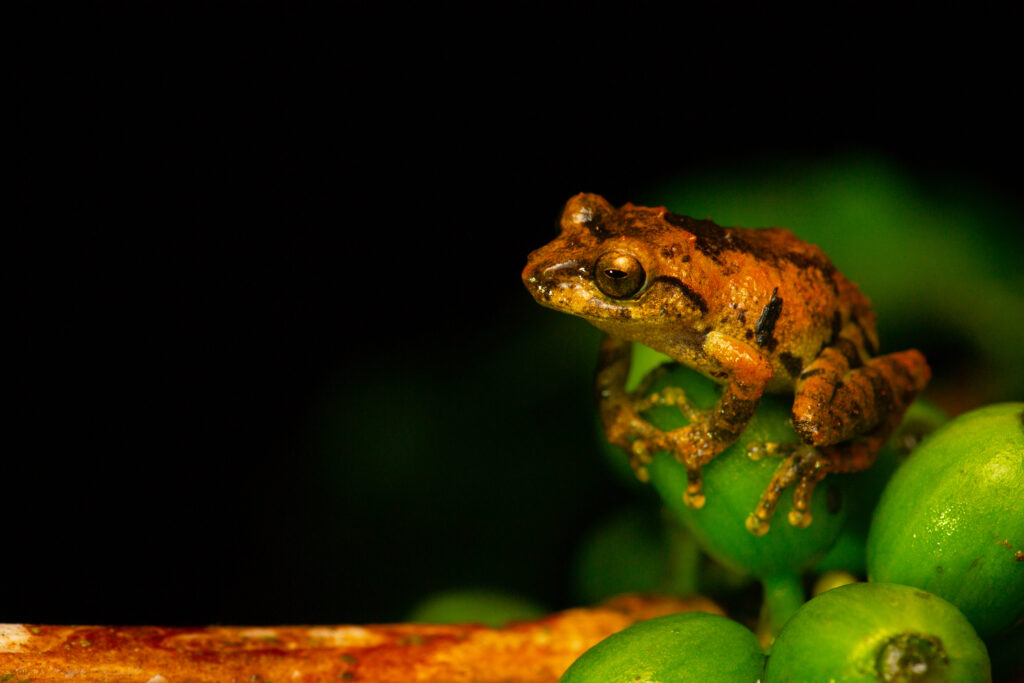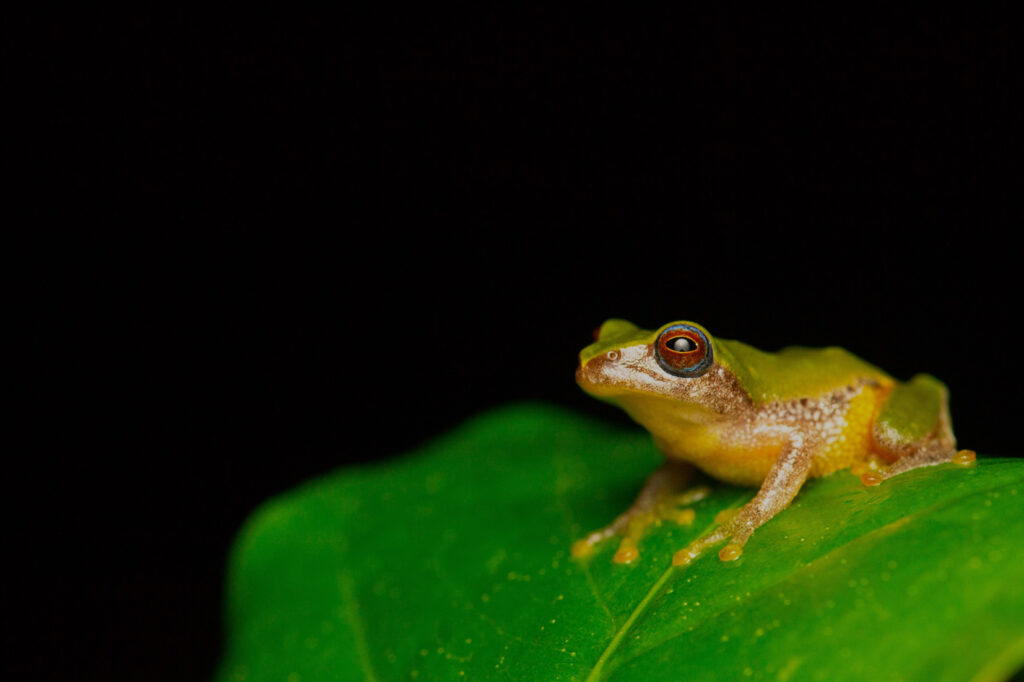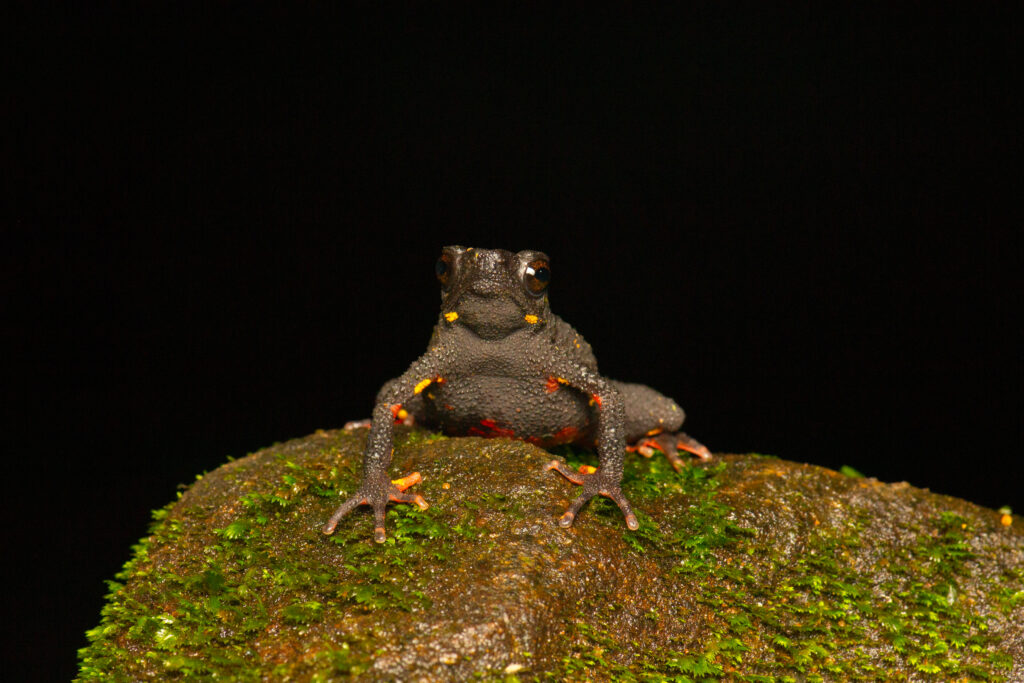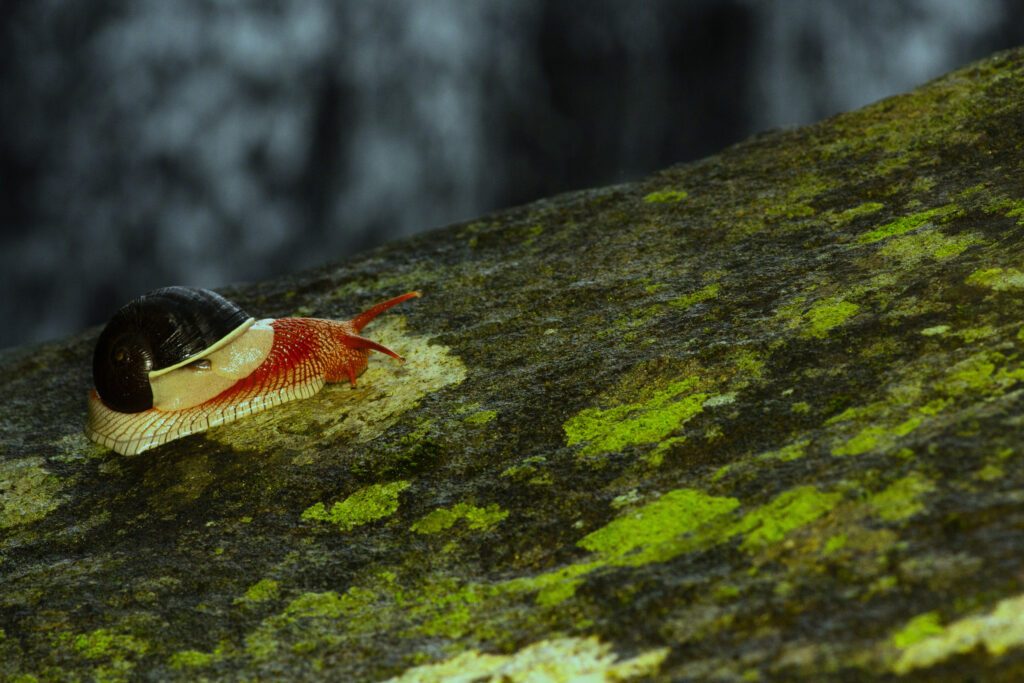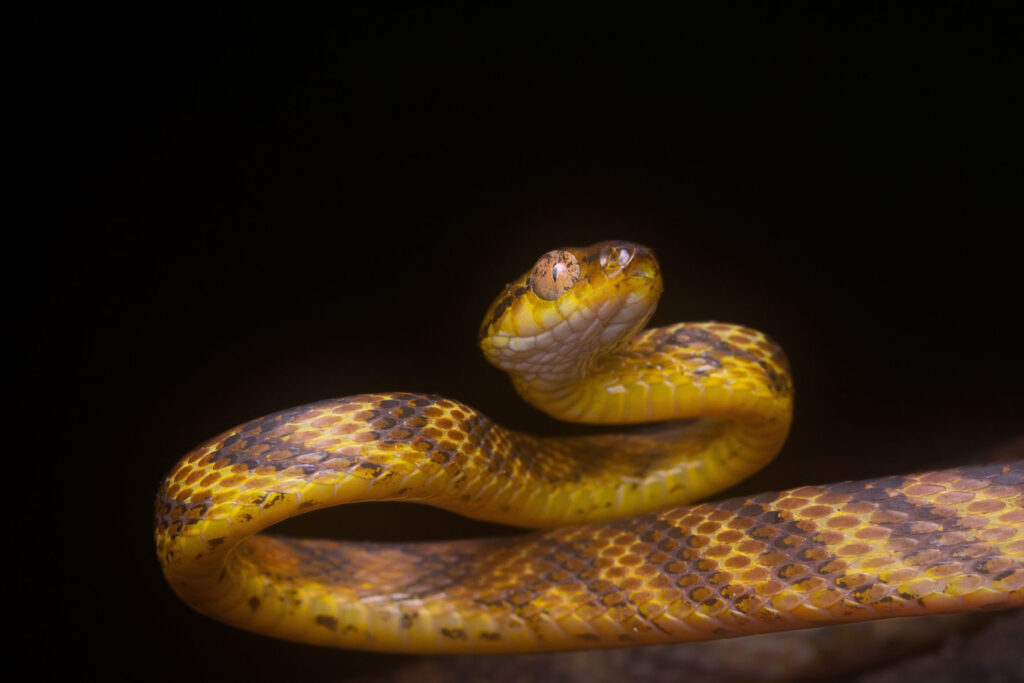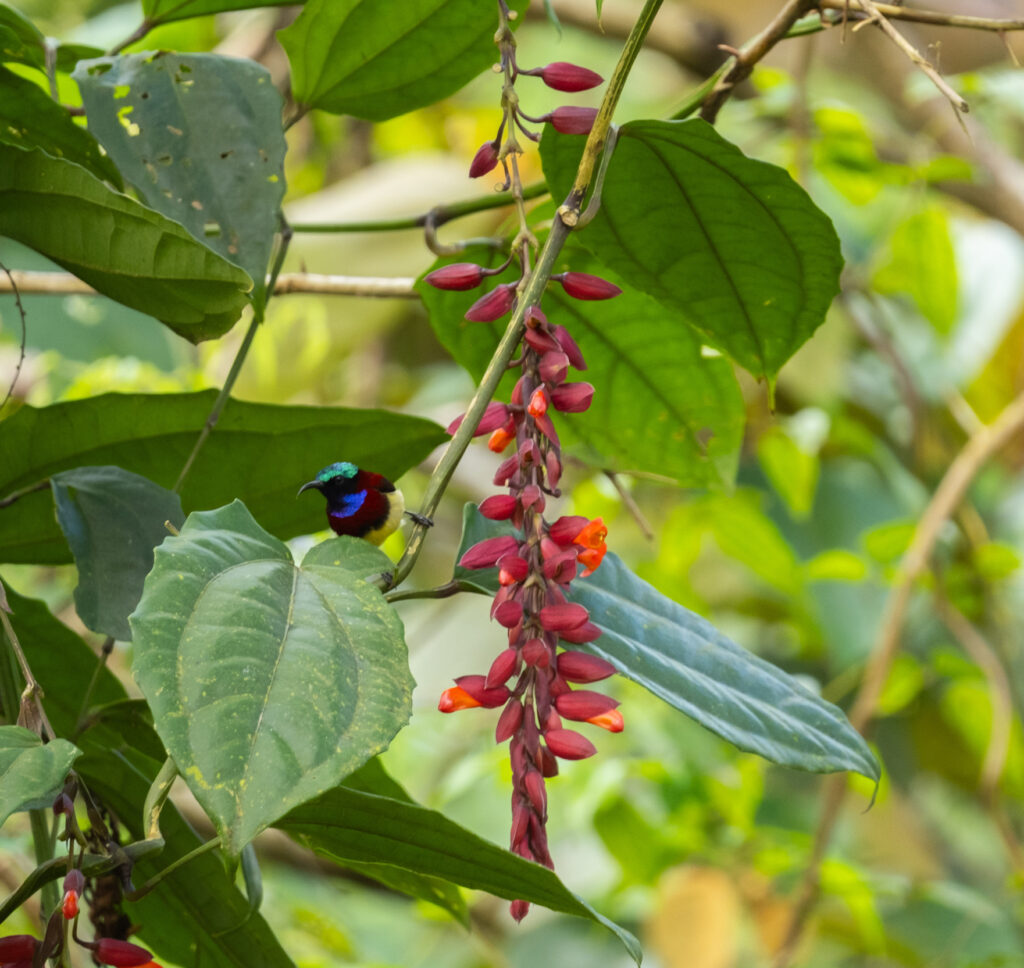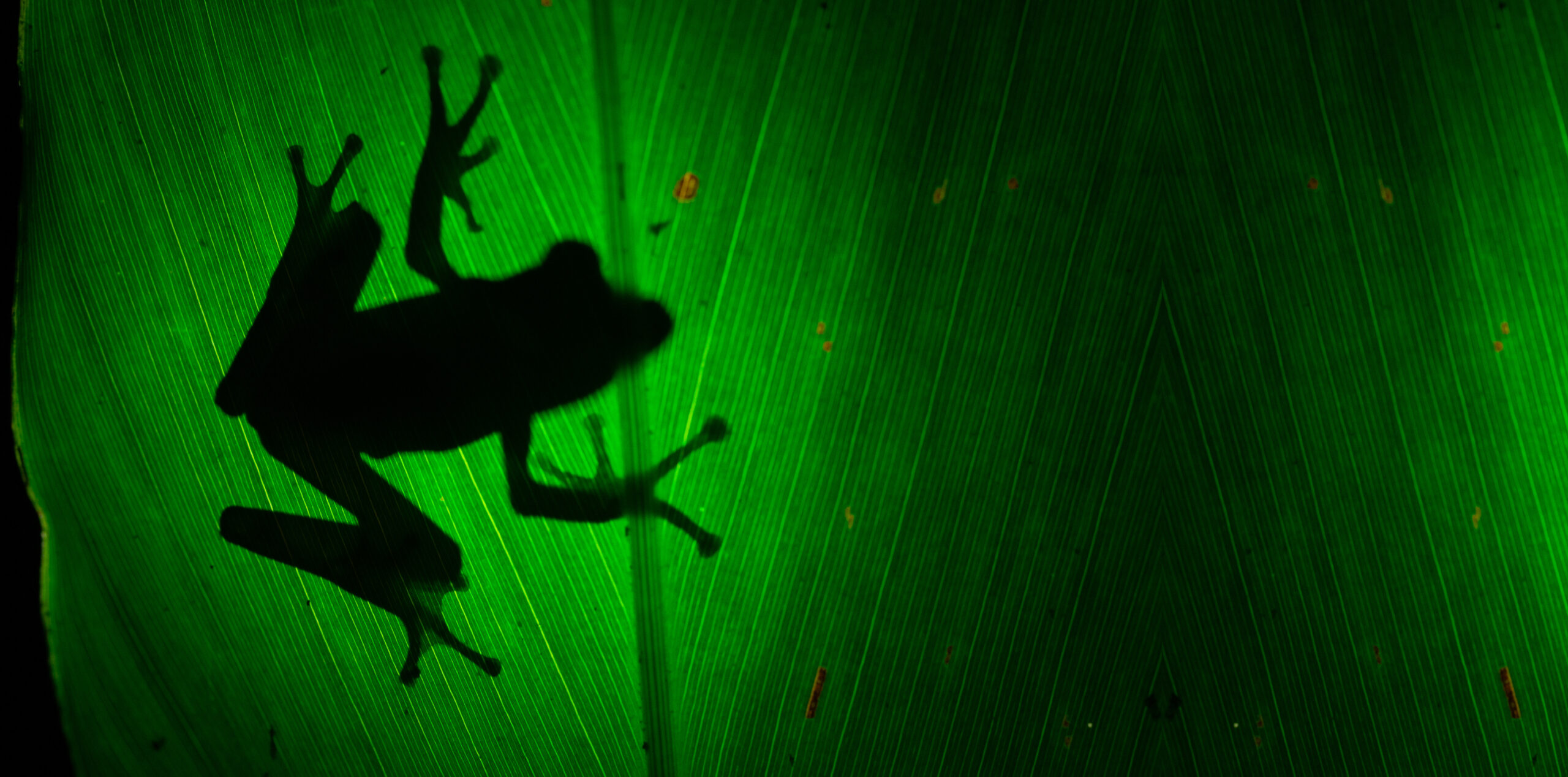

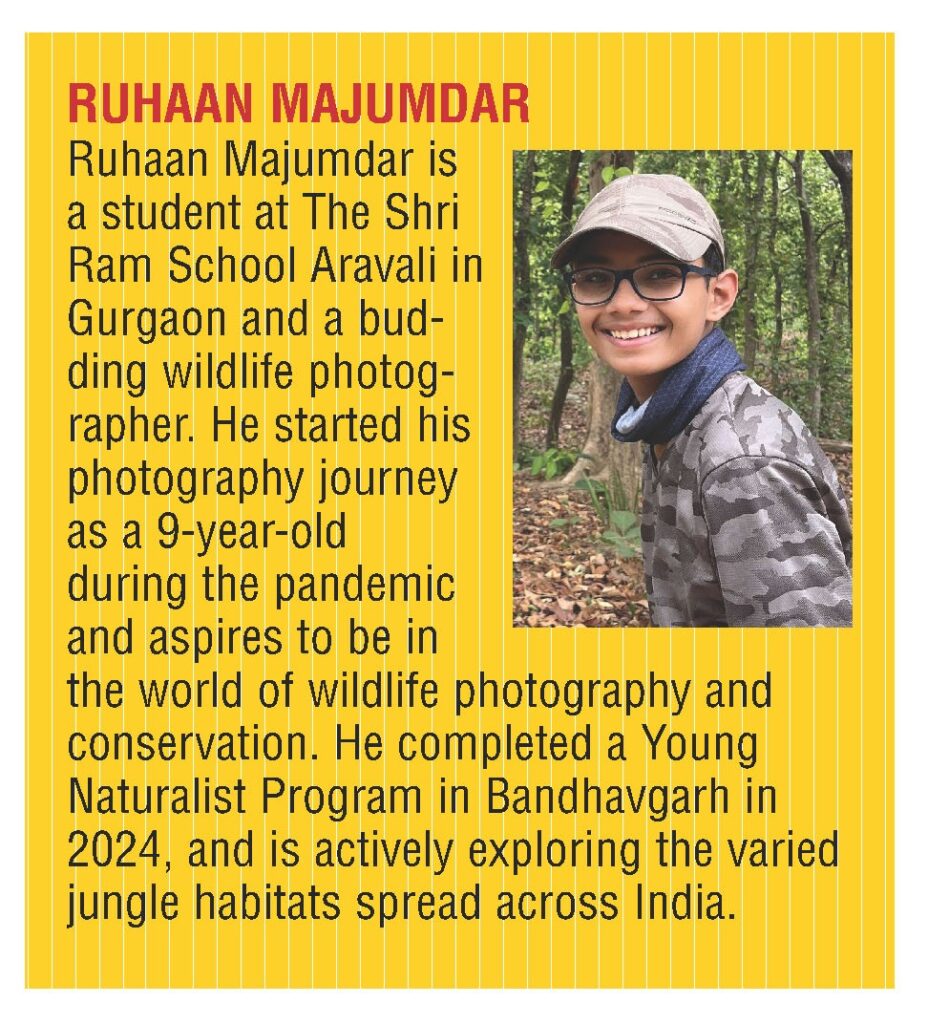
Text and pictures by Ruhaan Majumdar
Waking up to the screeching call of the Malabar Grey Hornbill, stepping onto the balcony with a steaming cup of chai; and soaking in the misty rainforest air – this is how mornings begin in the pristine wilderness of Honey Valley, Coorg. Nestled near the Brahmagiri Wildlife Sanctuary, Honey Valley is a beautiful coffee estate that doubles as a paradise for bird watchers. With nearly 250 species calling this place home, it offers a symphony of calls and colours to those who seek them. During my stay, I was fortunate to spot a dazzling array of birds, such as the Crimson-Backed and Loten’s Sunbirds, the Little Spiderhunter, the Malabar Grey Hornbill and the Greater Racket-Tailed Drongo. A particularly stunning flowering tree on the property became a hotspot for Sunbirds, providing countless opportunities for photography.
But my real quest in Coorg was not for birds – it was for frogs. Honey Valley boasts an extraordinary diversity of amphibians and reptiles, many of which are endemic to the Western Ghats. As night fell, we ventured into the rainforest, guided by the rhythmic croaks of bush frogs. Every leaf and tree trunk became a potential hiding spot, every call a clue leading us to a discovery.
The reason Honey Valley is famous is due to the abundance of bush frogs (Raorchestes sp.).
The most common species we encountered was the stunning Coorg Yellow Bush Frog (Raorchestes luteolus). We saw around 5 over two nights out herping. It is easily identified by its yellow colour and blue ring around its eye, which is why it is also called the Blue-Eyed Bush Frog. The species is only found in Karnataka, in areas like Coorg, Agumbe and Kudremukh. Another spectacular find was the Glandular Bush Frog (Raorchestes glandulosus). This individual was a burst of colours, with green, red and yellow on its body, and blue ring around its eye. It was one of the most vibrantly colored frogs I had ever seen. The last bush frog of our trip was a juvenile Anil’s Bush Frog (Raorchestes anili), a tiny but fascinating species.
Another fascinating family of frogs we encountered was the Night Frogs (Nyctibatrachus sp.), also known as wrinkled frogs due to their textured skin. These frogs range in size from a mere fingernail to the size of a palm, and they are found only in the Western Ghats, typically near streams and waterfalls. We were able to spot and photograph the Coorg Night Frog (Nyctibatrachus sanctipalustris), which is endemic to the Brahmagiri Hills, and the Wayanad Night Frog (Nyctibatrachus grandis), which is the largest night frog and is relatively more widespread.
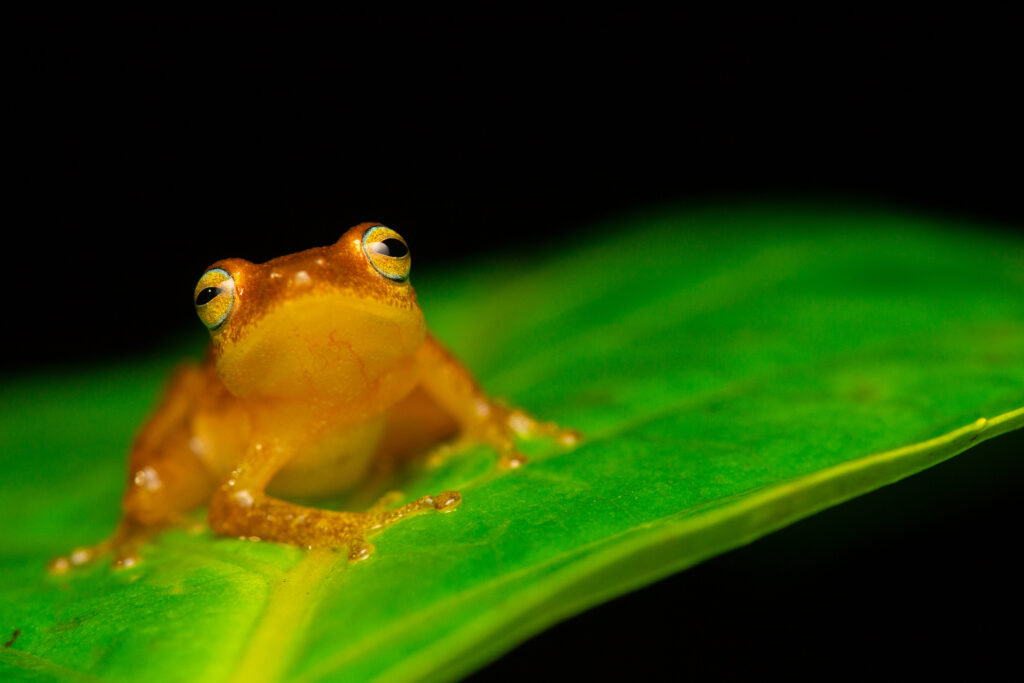
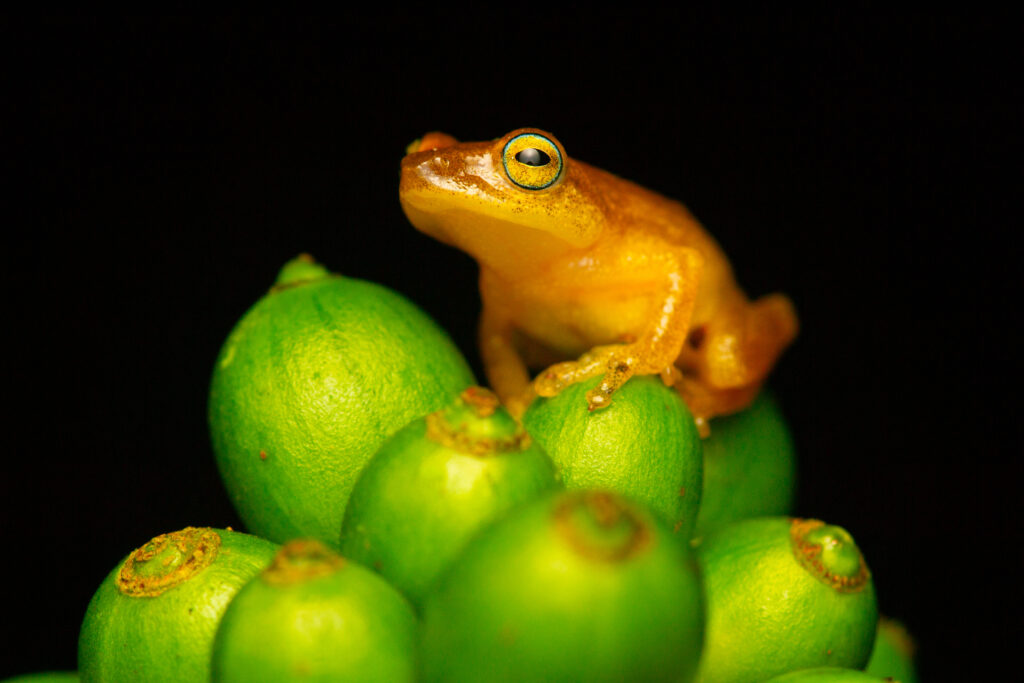
Among the most fascinating amphibians in the Ghats are the Dancing Frogs (Micrixalus sp.), also called Torrent Frogs. These tiny creatures have an unusual courtship ritual-they “dance” by waving their hind legs in a behavior known as foot-flagging to attract mates. At a waterfall, we saw two species of dancing frogs, the Wayanad Dancing Frog (Micrixalus saxicola) and the Elegant Dancing Frog (Micrixalus elegans).
The target species of this trip was the enigmatic Malabar Torrent Toad (Blaira ornata). This incredibly elusive frog is found only in Coorg, Kudremukh and Wayand around waterfalls and torrents. It is an absolutely beautiful frog with a black body, red underbelly and yellow spots all over its body, earning it the name “Disco-Light Toad”. We searched tirelessly until 11:30 PM before we found one. What made this find even more special was that we found it in October, and it is usually only visible during the early monsoons of the Western Ghats. Capturing this rare toad on camera felt like uncovering a hidden treasure.
Coorg is also home to the largest snail of the Western Ghats, the Red Giant Snail (Indrella ampulla). Its vibrant red body and glossy black shell make it a striking sight against the rainforest floor. We found one in the early morning, offering yet another fantastic photo opportunity.
The most unexpected star of the trip came in the form of a serpent. It was raining cats and dogs near the waterfall, when we found an absolutely stunning Thackeray’s Cat Snake (Boiga thackerayi) – an incredibly rare find during daylight hours, as this species is strictly nocturnal. With its yellowish body and tiger-like stripes, this beautiful snake was once thought to exist only in the northern Western Ghats but is now known to be more widespread across South India. Spotting and photographing it in the rain was an unforgettable moment.
This expedition to Coorg was nothing short of magical. From one of India’s rarest frogs to a nocturnal snake making an unusual daytime appearance, every moment felt like a discovery waiting to unfold. As I reflect on this journey, I know one thing for sure-I will return to the Western Ghats, to search and find new species to add to my list.
